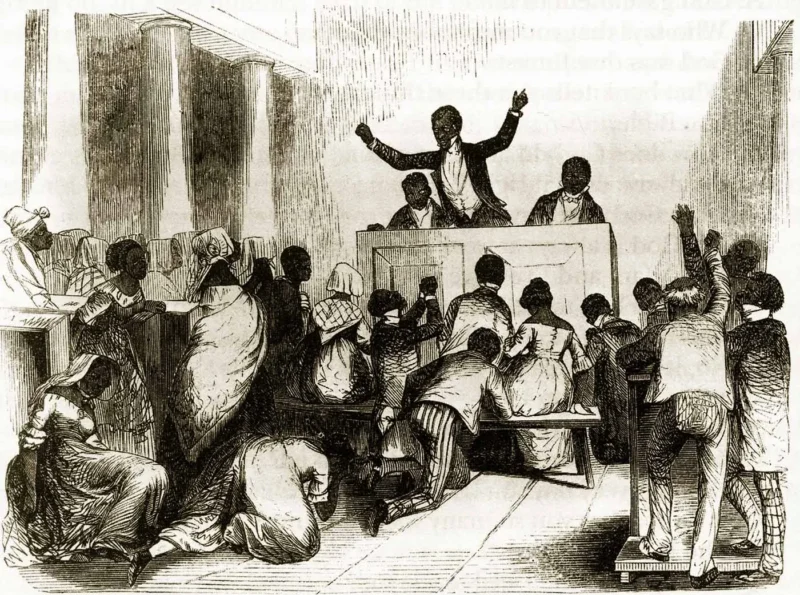Who were the United Socialists: The Black anarchist squatters you’ve never heard of
Share
Explore Our Galleries
Breaking News!
Today's news and culture by Black and other reporters in the Black and mainstream media.
Ways to Support ABHM?
By Justin A. Davis, The Emancipator

On March 26, 1907, a White police officer named John Cofield visited a home on the north side of Muskogee, Oklahoma — the largest town in what was then called “Indian Territory.” Assisted by volunteer officer Guy Fisher, Cofield had come to evict Carrie Foreman, a 94-year-old Black Cherokee woman.
What happened next became the gossip of a nation still reeling from Reconstruction and the aftermath of relocating Indigenous tribes from the East to the West.
Foreman was a part of a group, she says, “which believed that all property was free.” She told the police she “didn’t have to pay” rent. Her neighbors reported that the home was in high use: Black men and women gathered there at night. When the property manager tried to collect Foreman’s rent, he left empty-handed.
As the officers tried to remove Foreman, other squatters appeared with guns and opened fire. Cofield was shot just above his heart. Fisher was shot in the shoulder. Eyewitnesses alerted federal marshals, already stationed in town, who rushed to the home. A fierce shootout left three squatters dead and three injured. Marshals and police arrested six more, vowing to eliminate Foreman’s group.
This act of tenant unrest blended with racial upheaval sparked nationwide conversation. For a brief moment, newspapers across the country spread word of a “secret society” of “Negro fanatics” called the United Socialists. Police, journalists, and ordinary settlers didn’t know what to make of them. Were they revolutionaries, a religious cult, or a swindling scheme? A scattered historical record suggests that they were an unusual kind of messianic movement, one that drew from the spiritual practices and political contradictions of poor Black people in the American West. In the process, they defiantly challenged the logic of political sovereignty and land ownership that shaped Western expansion. Their ideology consisted of two basic tenets: The group could “seize any property and occupy it,” and “the United States had no authority to interfere.”
Learn more about the origin story, pieced together through newspaper articles.
Discover the brief history of Reconstruction.









Comments Are Welcome
Note: We moderate submissions in order to create a space for meaningful dialogue, a space where museum visitors – adults and youth –– can exchange informed, thoughtful, and relevant comments that add value to our exhibits.
Racial slurs, personal attacks, obscenity, profanity, and SHOUTING do not meet the above standard. Such comments are posted in the exhibit Hateful Speech. Commercial promotions, impersonations, and incoherent comments likewise fail to meet our goals, so will not be posted. Submissions longer than 120 words will be shortened.
See our full Comments Policy here.